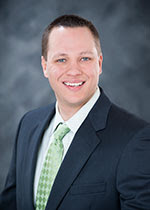We have recently discussed reflexes and their role in movement. We said reflexes are an involuntary response to a specific stimulus. One example was the tendon tap reflex: the doctor taps your patellar tendon with a hammer, and you extend your knee. Another example is the stretch reflex: when a muscle is stretched, it activates the muscle spindles that cause a reflexive contraction of the same muscle group. What if we need a bigger, more sustained response to a certain stimulus? That is where pre-programmed reactions come in.
Like reflexes, pre-programmed reactions are an involuntary response to a specific stimuli. However, there are some differences between the two. It takes about 35-40 ms (milliseconds) after a stimulus is presented for the reflexive contraction to take place. A pre-programmed reaction takes place about 50-100 ms after the stimulus is presented, and it is followed by a voluntary muscle contraction. Generally, the reflex is a quick burst of muscle activity that does not have many long lasting effects. The pre-programmed reaction is a stronger muscle contraction and may involve several muscle groups that cross many different joints. Pre-programmed reactions can also be modified by instructions. If a person is told that a perturbation is upcoming, and to try not to resist the perturbation, the pre-programmed reaction will be smaller than if they have received no instructions. Likewise, instructions can be given to increase the pre-programmed response after a perturbation. This indicates some involvement of the brain with pre-programmed reactions, which is not the case with reflexes.
Later this week, we will discuss some examples of pre-programmed reactions. The picture above is a hint (think about what happens when you stumble).
Monday, October 22, 2012
Subscribe to:
Post Comments (Atom)




No comments:
Post a Comment